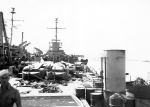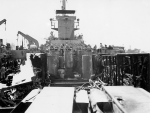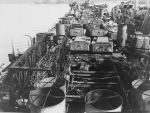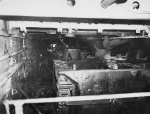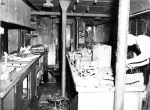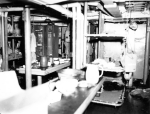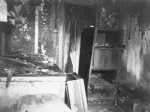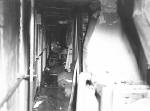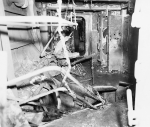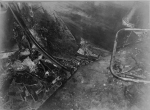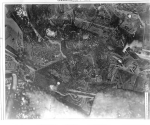Click On Image
For Full Size Image |
Size |
Image Description |
Contributed
By |
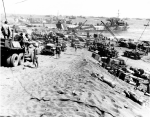 |
295k |
Vehicles on Iwo Jima's Red Beach, circa 25 February 1945, with USS LST-884 (center) and
USS LST-929 (at left, with H markings on her hull) unloading in the background. Among the vehicles are trucks, mobile cranes, amphibious tractors (LVTs),
jeeps and a variety of trailers. A field artillery piece is being pulled along in the right center. Note the pierced steel matting roadways. The original photograph
came from Rear Admiral Samuel Eliot Morison's World War II history project working files.
US US Naval History and Heritage Command Photo # NH 104589 |
Suzanne Carter Isaacson |
 |
34k |
USS LST-884 lays abandoned after being hit by a Japanese kamikaze attack off Okinawa, 1 April 1945. |
Allen Pike, Courtesy Joseph LaGeorge USS APB-44 |
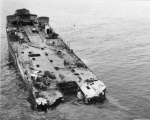
1016088417 |
322k |
The bow and midsection of LST-884 being salvaged, 9 July 1945. She was too damaged to be of any use and was sunk later in 1946.
US National Archives ID # 193705117, a US Army Air Corps photo now in the collections of the US National Archives |
David Upton |
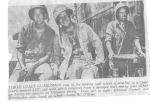 |
16k |
USS LST-884 LCVP crew members |
Courtesy Joseph Boone, GM3, USS LST-884
Suzanne Carter Isaacson |
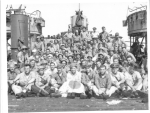 |
18k |
USS LST-884 crew photo. Notice the many different uniforms, a result of the crews loss of almost everything in the fire. This picture was taken once the crew was reunited at Ulithi. |
Courtesy Joseph Boone, GM3, USS LST-884
Suzanne Carter Isaacson |






